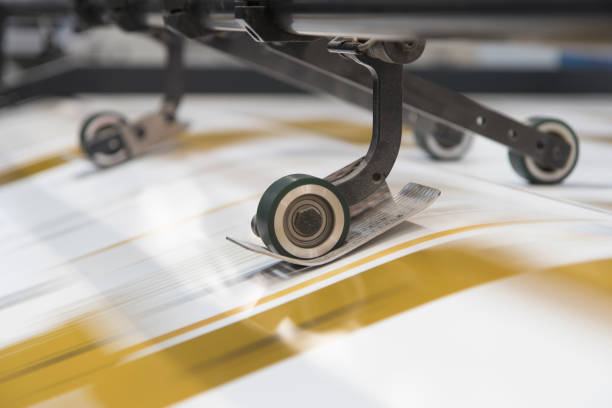July 27, 2023

Embolssing is characterized by producing a highly detailed or raised image on
essentially any surface. It's commonly used for adding a personal touch to
invitations, business cards, packaging, and print media. Understanding the types
and uses of embossing is essential when considering which type to choose. In the
following blog, we'll examine the different embossing methods and understand
what distinguishes them.
Blind embossing is a commonly used technique to create texture on paper.
Blind embossing is regarded as a traditional embossing method that involves
elevating a designed or photographed image without using any foil or ink. This
method focuses on adding texture rather than color to the paper. Blind
embossment is often used as a way of adding an added layer to printed business
and letterheads, envelopes, and packaging materials. It's the ideal technique
for creating a subtle yet understated raised look.
Debossing:
Debossing employs the process of blind embossment but reverses it. Instead,
if the image is being embossed, it's debossed deeper into the paper. It adds a
superb texture to plain or textured paper, resulting in a three-dimensional
effect. Despite debossing providing a stronger and more prominent effect
compared to blind embossing, it's a subtle yet elegant technique ideal in
business cards, invitations, and packaging.
Foil embossing is achieved by heating the foil and applying it onto the encased design.
Foil embossment involves heat stamping a thicker foil over an embossed
design. The resulting design is presented with a sparkling raised effect that's
complemented by either a metallic or gloss finish. Foil embossing is amazingly
versatile and can be applied to almost any substrate, from paper to cardstock to
plastics. Combining foil embossment and kiln etching provides the best look for
luxury products.
A combination of techniques is used to create stunning results.
Combination Techniques refers to using any combination technique mentioned
above to achieve a striking effect. For instance, incorporating foil into a
debossed design which has also been blind embossed can result in an
overwhelmingly stunning look. The mixing of techniques can produce an
outstanding and aesthetically appealing variation, particularly if the design
has intricate lines, small fonts, or delicate lines.
Sculptured Embossment
Sculptured embossoning is primarily employed to emboss a highly intricate
design. This method is widely used for embossing embossed images that depict the
wild world, such as leaves, flowers, or tree limbs. It entails a process that
involves manually inserting the ink into both surfaces of the printed design to
form a three-dimensional sculpture. The outcome is a highly-attractive and
eye-catching work that lends itself well to accentuating various printed
materials.
Conclusion:
Understanding the differences between embossing service types is necessary to effectively and appealingly design print resources. Whether enhancing business cards, wedding invitations, packaging, and branding material, embossing can be a superb way of highlighting the uniqueness of a printed item. By utilizing both these techniques and selecting the one best suited to suit both design and production, either a fusion or a dramatic design can be achieved on printed materials. Outsource the embossing process to an experienced provider who can guide and enhance any print design.
Posted by: Internet Marketing Line at
04:13 AM
| No Comments
| Add Comment
Post contains 524 words, total size 4 kb.
35 queries taking 0.0992 seconds, 72 records returned.
Powered by Minx 1.1.6c-pink.









